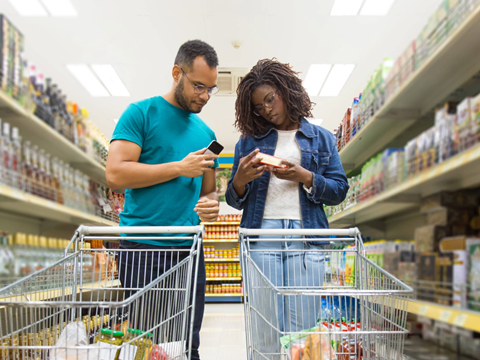
McKinsey’s latest research identifies six key barriers companies face when considering sustainability-minded packaging materials, including performance concerns, limited market supply, and different definitions of sustainability.
According to McKinsey, the global packaging sector will grow faster than global GDP, and companies across the value chain are making pledges to reduce their material consumption, drive circularity, and utilize more recycled materials.
Even so, the adoption of sustainability-minded packaging materials appears to be slow, despite demand from regulators and consumers alike – alongside previous research suggesting that factoring sustainability concerns into packaging design can lead to profit for retailers.
McKinsey’s annual research consults retailers, FMCG companies, distributors, and packaging industry executives dealing in common substrates across major end-user markets, and it claims to have interviewed ‘tens of thousands’ of consumers since its first survey round in 2020. Its findings span four continents and eleven countries.
This year, it has identified the key factors slowing the value chain down when it comes to the adoption of sustainability-minded packaging materials.
Affordability
Sustainability-minded packaging materials are often more expensive than the virgin plastics they are designed to replace. McKinsey observes that companies generally pass these costs onto consumers to maintain their profit margins.
This price differential is expected to persist in the medium term. McKinsey predicts that global supply for recycled plastics will reach around 60 million metric tons by 2030, yet expects demand to rise to around 90 million – putting pressure on retailers to charge more for eco-designed packaging.
Interviews suggest that up-and-coming material innovations, from home-compostable films to high-performing PHA for rigid packaging, could cost four to five times more than conventional polyolefins, depending on packaging specifications and barrier requirements. In turn, this could increase the price of the packaged good by 2-5%.
From a consumer perspective, McKinsey finds that between 40% and 85% of shoppers would be willing to pay more for sustainability-minded packaging in theory, depending on the region. However, that still leaves between 15% and 60% unwilling to pay; and these statistics may not reflect purchasing decisions in practice, especially in times of economic hardship.
Supply restrictions
Companies may struggle to adopt sustainability-minded materials if they do not exist in the required volumes, or are otherwise inconsistent in quality. For instance, McKinsey warns that packaging purchasers may fall short of their sustainability goals due to shortages of high-quality recycled materials, which will impact accessibility and contribute to rising prices.
In the USA, specifically, demand for recycled PET in 2030 is projected to be three times higher than its supply (assuming all packaging purchasers with public recycled content commitments make good on their promises).
A food-focused brand owner tells McKinsey that it had planned to switch five of its stock-keeping units to a sustainability-minded packaging material, but could only source enough to switch one. This reportedly raised questions as to whether the investments required for changing suppliers and bringing the new material to market were justifiable.
Sometimes, a heavy concentration of suppliers for a sustainable material can cause problems; McKinsey cites the ‘limited’ number of manufacturers providing home-compostable plastics. There isn’t always a similar alternative to the packaging materials in question, either, which apparently risks undermining supply chain resilience and deters companies from redesigning their packaging.
Performance
Brick-and-mortar and e-commerce retailers express concerns about the performance of new packaging materials during transportation, storage, and shelving processes. Some innovations are feared to worsen product breakage or spoilage, while certain substrates lack the strength or capacity for on-pack print – all of which could impact on-shelf presentation.
Using biodegradable PLA as an example, McKinsey’s findings indicate that its recyclability, compatibility, and thermostability are far worse than traditional PET solutions. However, the two materials are considered generally similar in their mechanical strength and stiffness.
Some interviewees believe that investments in new machinery, the combination of different materials (e.g. plastic and paper), and other modifications could improve packaging performance. Nevertheless, these adjustments depend on companies having the necessary resources, including capital expenditures.
Combining materials can also impact recyclability and require sustainability trade-offs, while industry experts report difficulties with understanding and adopting the necessary production equipment and processes for sustainability-minded materials.
The definition of ‘sustainability’
Not everybody agrees on the key areas of focus when it comes to sustainability. While stakeholders seem to agree on the importance of improving sustainability, their priorities can vary between improving circularity, decreasing carbon footprints, decreasing leakages, or a combination of multiple.
Similarly, companies don’t always have a clear understanding of consumer preferences, and when they do, it can yield complicated results. The general public’s definition of a sustainable material isn’t always fully informed and can vary across countries and demographic groups. Opinions may differ on the hierarchy of sustainability-minded materials – for example, the value of a recyclable pack versus a pack containing recycled content.
These discrepancies can lead to confusion as companies pursue multiple sustainability goals simultaneously. McKinsey indicates that many consumer-facing companies have set targets to reduce their greenhouse gas emissions, including net-zero emissions deadlines, but have since focused predominantly on improving recyclability and increasing recycled content.
Regulatory standards
Various regulations at the city, state, and national levels have impacted the packaging industry over the last decade, as McKinsey points out. Yet retailers and FMCG companies with operations in multiple regions can struggle with the scope and specifics of these measures, and they may be uncertain about how and when legislative measures will be implemented.
For instance, McKinsey points out the differences between compostable packaging regulations in Europe and the United States. Variations in rules across individual regions, as is the case in the European Union, can also cause confusion.
McKinsey underlines the increasing importance for international companies to understand the different requirements for their packaging across countries and other geographical areas.
Knowledge gaps
Companies across the packaging value chain may not have complete knowledge of the sustainability-minded packaging options available. With a constant influx of new packaging innovations advertised online, interviewees suggest that it can be difficult and time-consuming to evaluate how each could benefit their sustainability credentials and product performance, then consider cost, supply, and regulations.
Several say they rely on their existing suppliers to inform them of new developments. McKinsey infers this to mean they may not fully understand the developments available beyond the substrates their suppliers provide.
What now?
“Despite these multiple barriers, now is not the time for packaging purchasers to roll back their goals or ambitions,” McKinsey says. “Increasing regulatory requirements, growing consumer awareness, and the existence of a significant portion of consumers across countries that are willing to pay more—or even much more—for sustainable packaging mean that leading in this area remains an important source of growth and competitive advantage.”
Instead, it asserts that this is a “valuable window of opportunity for those that are prepared to invest and collaborate to develop and roll out innovative solutions that meet consumer demands and regulatory requirements.”
It encourages packaging purchasers to look into the pros and cons of all the packaging materials currently available, including availability, price, performance, and regulatory implications. Detailed analyses should be conducted to better understand the implications a packaging material will have on the product.
Various factors can affect the scalability of different materials, from the consumer segment to the global region. This should be taken into consideration, McKinsey says, but it adds that companies can minimize costs and complexity by considering environmental trade-offs and choosing one feasible packaging format to scale up over time.
“Our recommendation is to think about innovation in incremental steps because it is likely unfeasible to immediately achieve the perfect sustainable packaging solution,” it comments. “An incremental approach to change can help build momentum, but demonstrating early progress on sustainability-related and other relevant KPIs will be crucial.”
Companies should also be aware of their consumers’ viewpoints and values – for example, the areas of sustainability they value the most, and the packaging substrates they prefer. In-depth research can help corporations understand how far their consumers are willing to pay for sustainability-minded solutions, with McKinsey’s research revealing a recurring interest in price, quality, and convenience.
Last but not least, it recommends collaboration within the value chain to optimize sustainable packaging strategies, and across the industry itself to establish standards of best practice and invest in R&D.
Previous research from McKinsey asserted that Gen Z and millennials are the most likely generations to extra for sustainability-minded packaging, yet food safety and shelf life remain top of mind as consumers make their spending decisions.
A survey conducted with American consumers also names cost, convenience, and shelf life among the most influential factors driving purchases. Sustainability is noticeably absent, with McKinsey suspecting that economic uncertainties, lifestyle changes, and gaps in knowledge each play a role.
If you liked this story, you might also enjoy:
The ultimate guide to the Packaging and Packaging Waste Regulation in 2025
How are the top brands progressing on packaging sustainability?
Everything you need to know about global packaging sustainability regulation in 2025
The key to increasing the use of reusable packaging in supermarkets

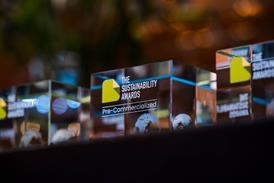

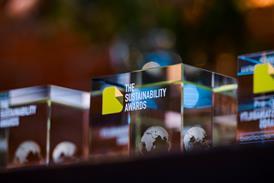
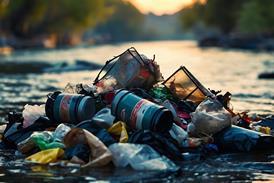
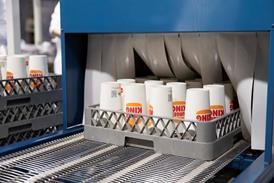












No comments yet